The post Top Olight Flashlight Alternatives for Law Enforcement and Military Use appeared first on Tank007.
]]>The Best Olight Alternatives for Law Enforcement and Military Professionals
Olight flashlights are known for their compact designs, high lumen outputs, and tactical versatility. However, for law enforcement and military personnel, other brands offer similar—sometimes superior—features, durability, and affordability. Whether you’re on patrol, in combat zones, or conducting search and rescue missions, your gear must be reliable, rugged, and purpose-built.
In this guide, we compare the top Olight alternatives tailored for tactical, military, and first responder use. We’ll break down the key criteria, provide a comparison table, and recommend flashlights trusted by professionals.
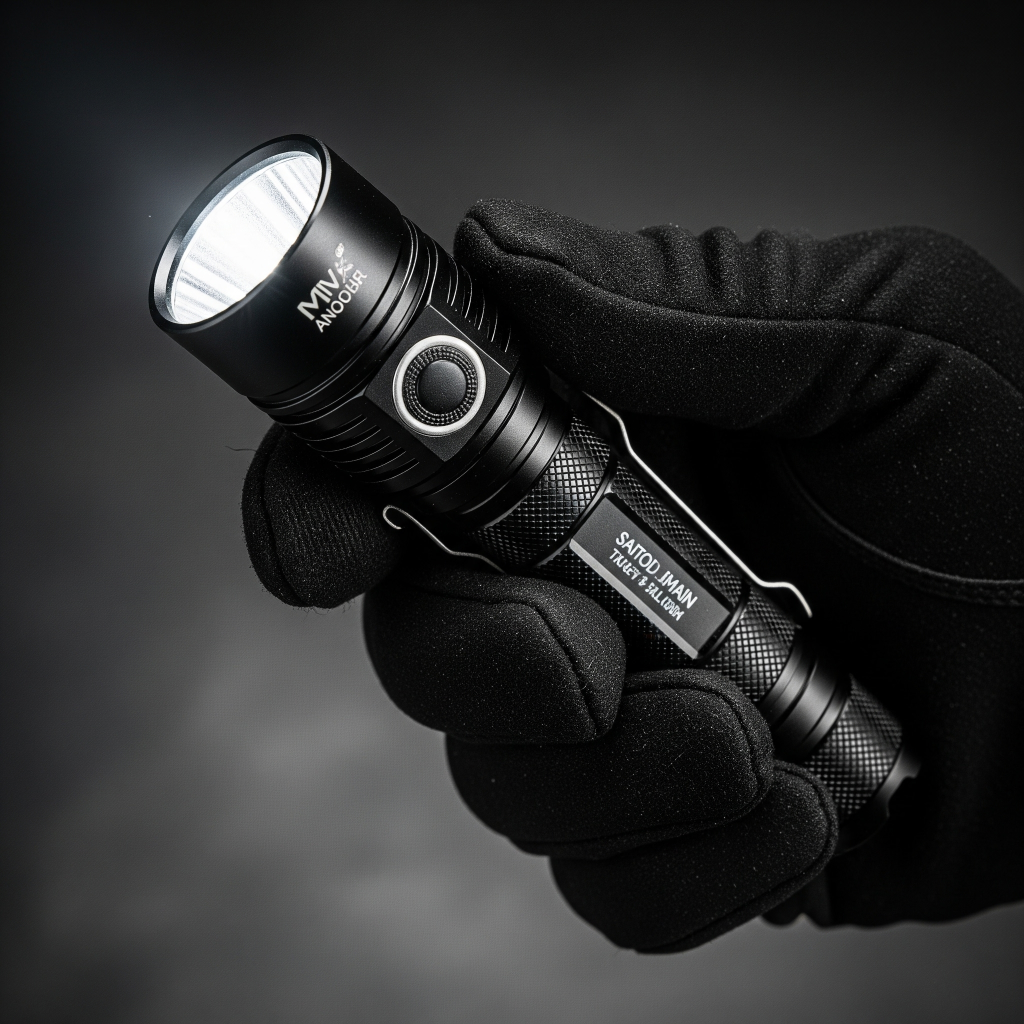
What to Look for in a Tactical Flashlight
Before diving into the alternatives, here are the key features law enforcement and military users require:
| Feature | Why It Matters |
|---|---|
| Lumen Output (Brightness) | Needs to blind targets or illuminate large areas (800–2000+ lumens). |
| Strobe Mode | For disorientation or signaling. |
| Durability | Must be impact-resistant and IPX-rated for water resistance. |
| Runtime | Long-lasting battery for extended missions. |
| Tail Switch / One-Hand Operation | Essential for weapon mounting or tactical use. |
| Rechargeable or Battery Flexibility | For remote field use or daily duty use. |
Top Olight Alternatives: Tactical Flashlight Comparison
| Brand / Model | Lumens | Battery | Notable Features | Price Range | Best For |
|---|---|---|---|---|---|
| Streamlight ProTac HL-X | 1000 | USB rechargeable / CR123A | Ten-Tap programming, IPX7 waterproof | $70–$90 | Police & Tactical |
| Fenix PD36R | 1600 | USB-C rechargeable 21700 | 115hr runtime, military-grade build | $90–$110 | Military & SAR |
| Nitecore P20iX | 4000 | 21700 USB-C | Strobe Ready mode, ultra-high lumen burst mode, ultra-high lumen burst |
$120–$130 | Special Forces |
| SureFire G2X Pro | 600 | 2x CR123A | Dual-output, durable Nitrolon body | $70–$80 | Patrol & Budget Units |
| ThruNite TN12 Pro | 1900 | 18650 rechargeable | Tactical interface, compact form | $60–$80 | Law Enforcement |
Streamlight’s official site and Fenix Lighting provide professional-grade specs and support for tactical users.
Why Consider an Olight Alternative?
While Olight offers excellent flashlights, there are reasons why professionals may opt for alternatives:
- Better Compatibility with weapon mounts or duty gear.
- More Durable Bodies designed for drops and harsh weather.
- Programmable UI like Streamlight’s Ten-Tap or Nitecore’s mode memory.
- Higher Beam Intensity for long-range target visibility.
- Mission-Specific Features (e.g., strobe-on activation, turbo burst, or locking switches).
Field-Tested Picks by Use Case
| Use Case | Best Alternative | Why |
|---|---|---|
| Night Patrol | Fenix PD36R | Long battery life + intuitive UI |
| High-Speed Raids | Nitecore P20iX | 4000 lumens + Strobe Ready |
| Rural Search and Rescue | ThruNite TN12 Pro | Light weight + tactical strobe |
| Vehicle Checks & Backup | Streamlight HL-X | Mount-ready + easy mode switch |
| Entry-Level Budget Use | SureFire G2X Pro | Affordable and rugged |
Rechargeable vs. Disposable Battery Models
Rechargeable lights are ideal for long-term savings and daily use, while CR123A models are better for remote operations where recharging isn’t feasible.
| Type | Pros | Cons |
|---|---|---|
| Rechargeable | Eco-friendly, cost-effective, USB-C convenience | Requires downtime for charging |
| Disposable Battery | Field-ready, replace instantly | Ongoing battery cost, environmental impact |
Final Thoughts
When it comes to tactical operations, reliability can be the difference between mission success and failure. While Olight is a strong contender, brands like Streamlight, Fenix, and Nitecore are built with law enforcement and military performance in mind. Whether you’re looking for something brighter, tougher, or more adaptable, these alternatives deliver.
 If you’re outfitting a unit or department, consider bulk tactical flashlight orders with wholesale pricing and branding options.
If you’re outfitting a unit or department, consider bulk tactical flashlight orders with wholesale pricing and branding options.
The post Top Olight Flashlight Alternatives for Law Enforcement and Military Use appeared first on Tank007.
]]>The post Top 5 Benefits of Using Currency UV Lights for Business: Save Money, Stop Fraud appeared first on Tank007.
]]>In today’s world of increasing counterfeit threats and heightened financial security standards, currency UV lights have become an essential tool for businesses. From retail stores and banks to small shops and event vendors, ultraviolet light detection systems help identify fake bills quickly and affordably.
This article explores the top five benefits of using currency UV lights for your business, with comparisons and actionable tips to help you make the most of this technology.
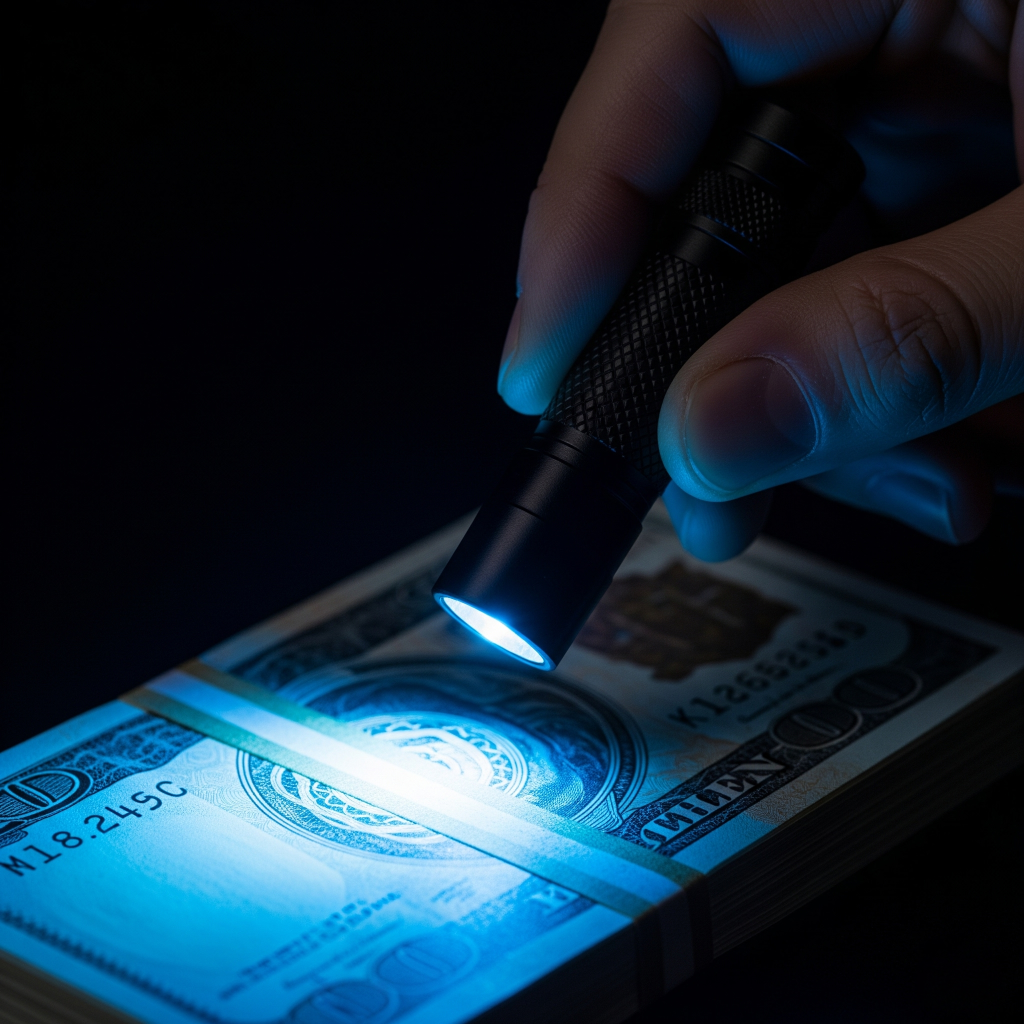
1. Detect Counterfeit Money Instantly
One of the primary uses of UV lights is detecting security features embedded in legitimate currency.
| Feature | Description |
|---|---|
| UV Markings | Genuine bills contain invisible fluorescent strips, threads, or inks that glow under UV light. |
| Speed | UV lights reveal counterfeit signs in seconds, reducing transaction time. |
| Coverage | Works with most global currencies, including USD, EUR, GBP, and JPY. |
For U.S. currency, the Federal Reserve offers detailed counterfeit detection guides.
2. Minimize Financial Loss from Fake Bills
Accepting just one fake bill can mean a direct loss to your bottom line. UV lights allow your staff to verify cash quickly without disrupting the sales process.
Without UV Detection
- High risk of counterfeit acceptance
- Employee error due to visual checks
- No refund/recovery option once a fake bill is accepted
With UV Detection
- Automatic identification of fraudulent bills
- Immediate rejection at the register
- Cost savings over time
3. Improve Staff Confidence and Efficiency
Training staff on using UV lights takes minutes, but the impact is long-lasting. Employees feel empowered and protected when they know how to handle counterfeit detection tools properly.
| Aspect | Benefit |
|---|---|
| Ease of Use | Point and scan with little training required |
| Consistency | Reduces human error and subjectivity in visual checks |
| Confidence | Staff feel more secure and competent at handling transactions |
4. Low-Cost Security Solution with High ROI
Compared to expensive counterfeit scanners, UV lights are affordable for businesses of any size.
| Tool Type | Price Range | Ideal For |
|---|---|---|
| Portable UV Pens | $5–$15 | Small vendors, mobile businesses |
| Handheld UV Lights | $10–$30 | Retail counters, delivery businesses |
| UV Scanners with LED | $30–$100 | High-volume cash handling locations |
Many models are available on platforms like Amazon, Staples, and Office Depot.
5. Supports Compliance and Audit Trails
Businesses, especially in banking and retail sectors, must often comply with internal policies or regulatory standards for cash management and fraud detection.
With UV currency lights:
- Maintain audit-ready procedures for cash handling
- Demonstrate due diligence to insurers and auditors
- Add an extra layer of accountability and transparency
Comparison Table: UV Light vs. Traditional Cash Verification Methods
| Method | Speed | Accuracy | Cost | Training Required |
|---|---|---|---|---|
| UV Light |  Fast Fast |
 High High |
 Low Low |
 Minimal Minimal |
| Visual Inspection |  Slow Slow |
 Low Low |
 Free Free |
 Required Required |
| Bill Validator Machines |  Fast Fast |
 High High |
 Expensive Expensive |
 Some Some |
| Watermark Checks |  Manual Manual |
 Inconsistent Inconsistent |
 Free Free |
 Required Required |
Final Thoughts
For businesses that handle cash regularly, currency UV lights offer a simple, cost-effective solution to improve financial security and reduce losses from counterfeit bills. They require minimal training, deliver fast results, and build trust among employees and customers.
Whether you run a small coffee shop, manage a retail chain, or oversee nonprofit donations, adding a UV detection tool can save your business both money and reputation.
The post Top 5 Benefits of Using Currency UV Lights for Business: Save Money, Stop Fraud appeared first on Tank007.
]]>The post How to Customize Mini Flashlights for Your Brand Promotion: A Complete Guide appeared first on Tank007.
]]>Promotional products are a tried-and-true strategy for brand visibility, and custom mini flashlights are one of the most practical, portable, and eye-catching options available. Whether for trade shows, employee gifts, or customer appreciation campaigns, these pocket-sized tools shine—literally and figuratively.
In this guide, we’ll explore:
- Why mini flashlights are effective promotional tools
- Customization options available
- Design tips
- A comparison table of materials and printing methods
- Where to source them
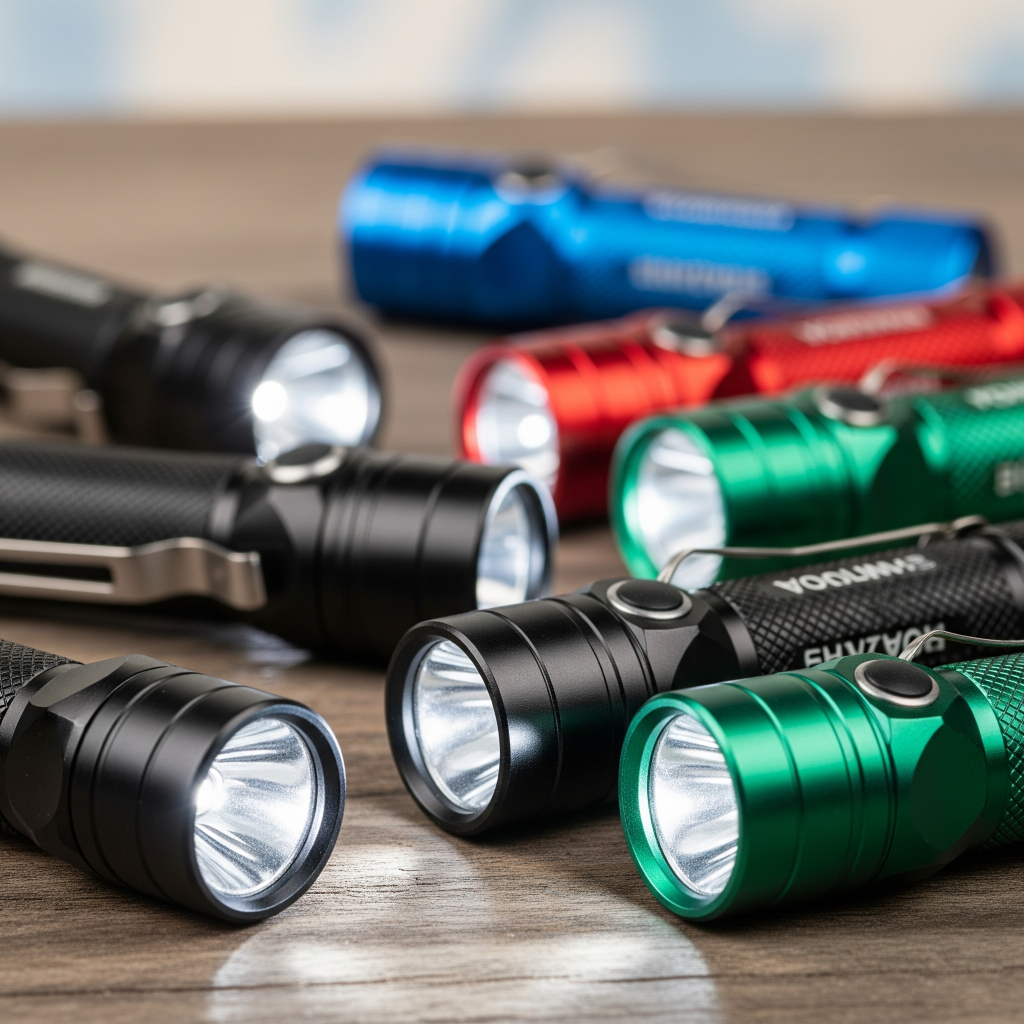
Why Choose Mini Flashlights for Brand Promotion?
| Feature | Benefit |
|---|---|
| Compact & Portable | Easily fits in pockets or bags, making your brand visible everywhere. |
| High Utility | Used frequently for emergencies, outdoor activities, or everyday use. |
| Cost-Effective | Available in bulk at affordable prices. |
| High Brand Recall | Functional items are more likely to be remembered and retained. |
Customization Options
You can personalize mini flashlights in multiple ways depending on your branding goals and budget.
| Customization Type | Description | Best For |
|---|---|---|
| Logo Printing (Pad/UV) | Print your company logo or slogan on the casing. | Corporate giveaways, trade shows |
| Color Selection | Choose colors that match your brand identity. | Brand consistency |
| LED Light Color | Customize with white, blue, red, or UV lights. | Special applications |
| Engraving | Permanent, professional look using laser engraving. | Premium gifts, executive branding |
| Packaging Options | Choose branded boxes or eco-friendly packaging. | Retail or gift presentation |
Design Tips for Maximum Brand Impact
- Use Bold Fonts: Ensure your logo or text remains legible on a small surface.
- Contrast Is Key: Choose a flashlight color that makes your branding pop.
- Less is More: Keep your message short and focused—logo + slogan works best.
- Consider Use Case: Tailor the flashlight specs (e.g., waterproof, rechargeable) to your target audience (e.g., outdoor enthusiasts vs. office staff).
Popular Use Cases
- Trade Show Swag: Small, affordable, and useful giveaways that create a lasting impression.
- Corporate Gifts: Especially with metal casing and laser engraving for executives.
- Emergency Kits: Ideal for non-profits or public service campaigns.
- Retail Branding: Great for product bundling or bonus gifts.
Mini Flashlight Customization Options: Comparison Table
| Feature | Basic Plastic Model | Aluminum Premium Model |
|---|---|---|
| Material | ABS Plastic | Anodized Aluminum |
| Printing | Pad or UV Print | Laser Engraving |
| LED Colors | White | Multi-color, UV available |
| Cost (per unit) | $0.50–$1.00 | $2.00–$4.00 |
| Durability | Moderate | High |
| Recommended For | Mass giveaways | VIP clients, B2B partners |
Where to Order Custom Mini Flashlights
There are several reputable sources where you can place bulk orders:
- AnyPromo.com – Custom promotional products at scale
- Custom Earth Promos – Eco-friendly options
- Alibaba – Ideal for international wholesale and customization flexibility
- Local manufacturers or suppliers – Especially useful if you need short lead times
Final Thoughts
Mini flashlights are more than just keychain accessories—they’re a branding powerhouse when designed and distributed strategically. With various material, printing, and feature options, businesses of all sizes can find a model that fits their brand identity and marketing goals.
By choosing the right customization methods and understanding your target audience, your brand can quite literally shine through every flashlight you give away.
The post How to Customize Mini Flashlights for Your Brand Promotion: A Complete Guide appeared first on Tank007.
]]>The post Top Bulk Flashlights for Industrial Use: Compare Durability, Brightness & Price in 2025 appeared first on Tank007.
]]>In industrial environments such as construction sites, factories, warehouses, and mining zones, flashlights must endure harsh conditions and deliver consistent brightness. Whether you’re purchasing for your crew, safety team, or emergency response unit, choosing the right bulk flashlight is essential for both productivity and safety.
This guide explores key factors—durability, brightness, and cost—while offering side-by-side comparisons of popular bulk flashlight models for industrial applications.
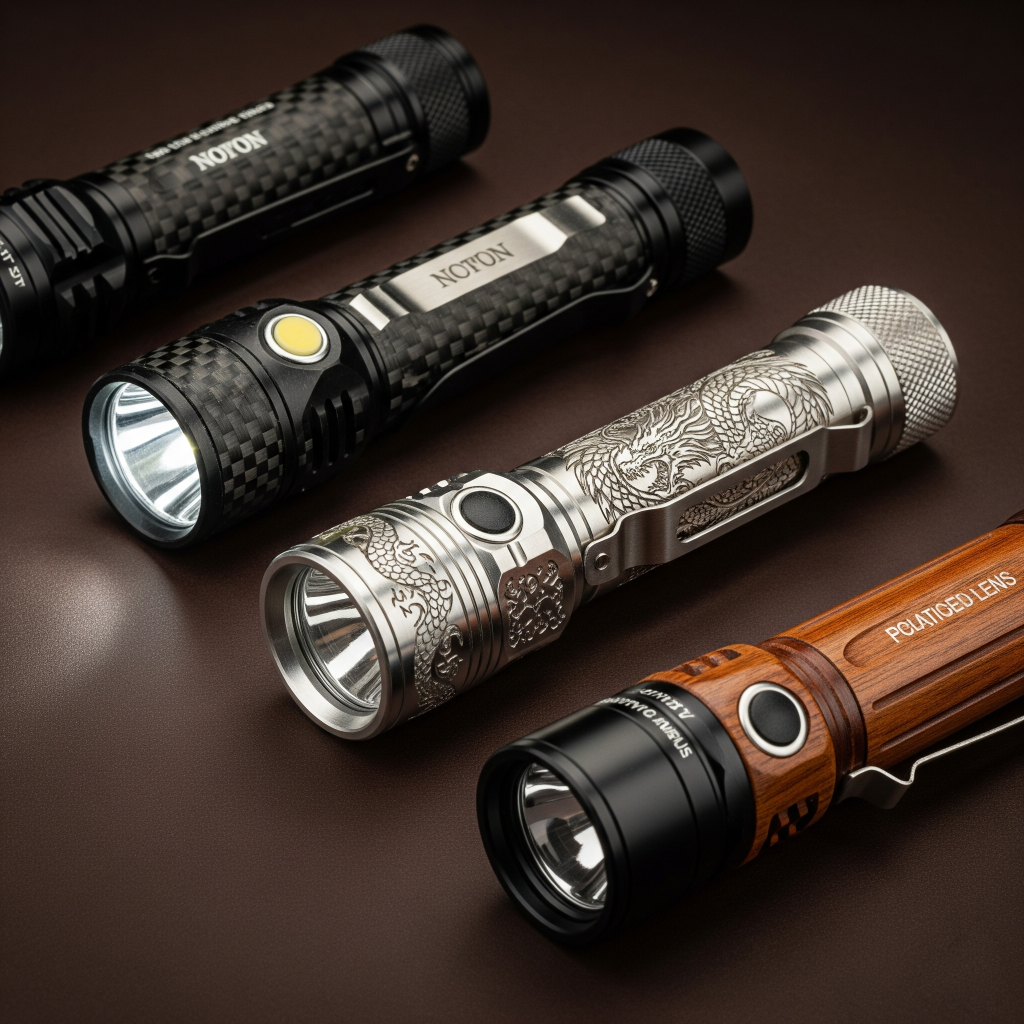
1. Why Bulk Flashlights Matter in Industrial Settings
Industrial workplaces require tools that are:
- Durable enough to withstand impact, dust, and moisture
- Bright enough to illuminate large, dark areas
- Cost-effective for bulk purchasing across teams or departments
2. Key Features to Consider
| Feature | Importance in Industrial Use |
|---|---|
| Lumens (Brightness) | 300–1000 lumens for clear visibility in large areas |
| Battery Type | Rechargeable preferred for lower long-term costs |
| Build Material | Aircraft-grade aluminum or ABS plastic |
| Ingress Protection (IP) | IPX4–IP68 to ensure water/dust resistance |
| Drop Resistance | Survives 1–2 meter drops on concrete |
| Clip or Magnetic Base | For hands-free use in mechanical or electrical tasks |
3. Top Bulk Flashlight Models for Industrial Use (2025)
| Model | Lumens | Battery Type | IP Rating | Drop Resistance | Price per Unit (Bulk 100+) | Best For |
|---|---|---|---|---|---|---|
| TANK007 PT10 | 800 | Rechargeable Li-ion | IPX6 | 1.5 meters | $11.50 | General industrial lighting |
| Coast G50 Bulk Pack | 355 | 3x AAA | IPX4 | 1 meter | $10.20 | Light-duty use |
| Streamlight 44910 Siege | 540 | Rechargeable or Alkaline | IPX7 | 2 meters | $14.80 | High-impact environments |
| Maglite ML300LX | 625 | D-cell | IPX4 | 1 meter | $16.99 | Warehouse/security patrol |
Explore bulk purchase options on Global Industrial or Grainger
4. Cost vs. Performance Analysis
| Factor | Rechargeable Models | Disposable Battery Models |
|---|---|---|
| Initial Cost | Slightly higher | Lower |
| Long-Term Cost | Lower (no new batteries) | Higher (frequent replacements) |
| Sustainability |  Eco-friendly Eco-friendly |
 Higher waste Higher waste |
| Best For | Daily industrial use | Backup/emergency kits |
Recommendation: If your team uses flashlights daily, rechargeable models provide better ROI over time.
5. Common Industrial Use Cases
| Use Case | Flashlight Requirement |
|---|---|
| Construction Sites | High brightness, rugged design, long runtime |
| Utility Maintenance | Compact with belt clips or magnetic base |
| Emergency Response | Waterproof, shockproof, high-intensity beam |
| Warehouse Operations | Mid-lumen, hands-free options for inventory work |
6. How to Choose a Reliable Supplier
When ordering bulk quantities, choose a vendor that offers:
- Product certifications (CE, RoHS, etc.)
- Warranty support
- Custom logo printing
- Flexible MOQ (Minimum Order Quantity)
Check out Tank007Store.com for industry-ready bulk flashlight options with customizable branding.
Conclusion
Buying bulk flashlights for industrial use isn’t just about quantity—it’s about investing in safety, performance, and long-term savings. With the right combination of durability, brightness, and cost-efficiency, your team can work more effectively, even in the darkest, harshest environments.
The post Top Bulk Flashlights for Industrial Use: Compare Durability, Brightness & Price in 2025 appeared first on Tank007.
]]>The post Why Custom Flashlights Make the Best Corporate Giveaway in 2025 appeared first on Tank007.
]]>In the crowded world of corporate gifting, custom flashlights stand out as practical, affordable, and memorable tools that people actually use. Whether you’re attending trade shows, thanking loyal clients, or promoting a new product, branded flashlights are a smart way to light up your brand awareness.
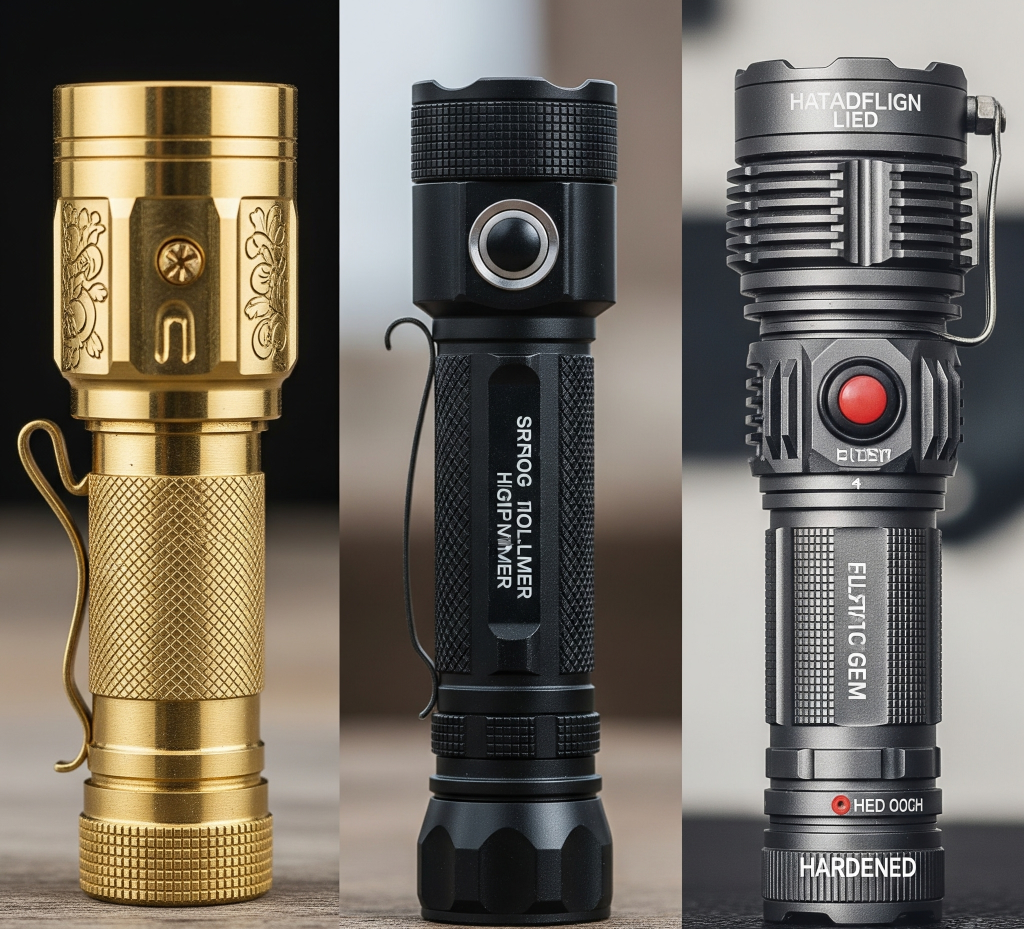
1. Practical and Universal Appeal
Flashlights are used by everyone—from office workers to outdoor enthusiasts. Unlike pens or keychains that get lost or tossed, a flashlight is something your clients or partners will likely keep and use, giving your brand longer exposure.
Benefits include:
- Long product lifespan
- Year-round usefulness
- Universal functionality
2. High-Visibility Branding
Custom flashlights offer large surface areas for laser engraving or color printing, allowing your logo to stand out every time the flashlight is used.
| Branding Option | Description | Visibility Level |
|---|---|---|
| Laser Engraving | Permanent, sleek and professional | High |
| Color Printing | Eye-catching and brand-aligned | High |
| Custom Shapes | Unique flashlight body designs | Very High |
3. Affordable for Bulk Gifting
Compared to luxury corporate items, custom flashlights are cost-effective without compromising on quality. Here’s a cost breakdown:
| Quantity | Avg. Cost per Unit | Branding Included? | Estimated Use Lifespan |
|---|---|---|---|
| 100 | $4.50–$6.00 | Yes | 2+ years |
| 500 | $3.50–$5.00 | Yes | 2+ years |
| 1,000+ | $2.50–$4.00 | Yes | 2+ years |
 Pro Tip: Use platforms like Tank007 or Alibaba to get competitive pricing on bulk orders with full customization options.
Pro Tip: Use platforms like Tank007 or Alibaba to get competitive pricing on bulk orders with full customization options.
4. Ideal for All Occasions
Custom flashlights are versatile and fit a wide range of corporate use cases:
- Trade Shows & Expos: Attract booth traffic
- Client Thank-You Gifts: Show appreciation
- Employee Onboarding Kits: Useful welcome item
- CSR or Community Events: Promote safety and brand goodwill
5. Easy to Customize
You can customize:
- Size and color
- Battery type (rechargeable vs. disposable)
- Light output (lumens)
- Material (plastic, aluminum, stainless steel)
This flexibility ensures you can match the product quality to your company’s branding and budget.
6. Compared to Other Corporate Gifts
| Item Type | Usefulness | Branding Area | Durability | Shelf Life | Engagement |
|---|---|---|---|---|---|
| Custom Flashlight |  High High |  Large Large |  Long Long |  Long-Lasting Long-Lasting |  High High |
| Pen |  Medium Medium |  Medium Medium |  Short Short |  Short Short |  Low Low |
| Tote Bag |  Medium Medium |  Large Large |  Medium Medium |  Short Short |  Medium Medium |
| Mug |  Medium Medium |  Medium Medium |  Medium Medium |  Long Long |  Medium Medium |
7. Eco-Friendly and Safe Options Available
Modern suppliers now offer eco-friendly materials and rechargeable options, aligning with corporate sustainability initiatives. Safety-rated flashlights are ideal for organizations in education, logistics, and healthcare sectors.
8. Real-World Use Case: Disaster Relief Campaign
During disaster preparedness campaigns, NGOs and municipalities often distribute custom flashlights branded with emergency hotlines and safety instructions—a practical way to save lives while reinforcing trust and visibility.
Conclusion
Custom flashlights are more than just promotional tools—they are functional gifts that provide long-term value, enhance brand recall, and align with today’s practical, safety-focused, and eco-conscious corporate culture.
The post Why Custom Flashlights Make the Best Corporate Giveaway in 2025 appeared first on Tank007.
]]>The post How to Design Your Own Custom Flashlight: A Complete 2025 Guide appeared first on Tank007.
]]>How to Design Your Own Custom Flashlight: A Complete Guide
Whether you’re a flashlight enthusiast, a business owner looking for unique promotional products, or someone with a specific design vision, creating your own custom flashlight can be both rewarding and practical. This guide covers everything from design basics to advanced customization, ensuring you get a high-quality, personalized flashlight.
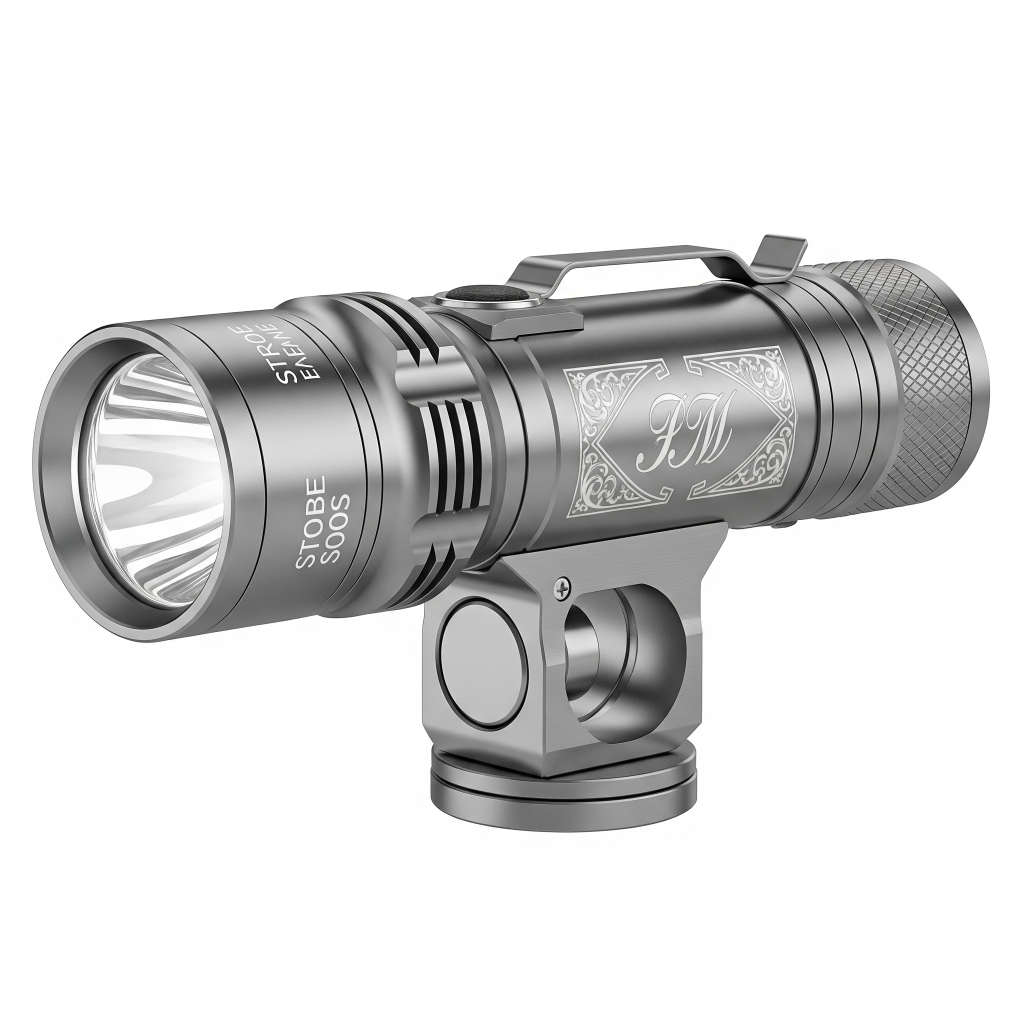
1. Why Design a Custom Flashlight?
- Unique Branding: Custom flashlights are excellent for promotional items, with your logo, colors, and style.
- Tailored Functionality: Choose brightness levels, beam distance, and battery type.
- Material Selection: From aluminum to polymer, select materials based on durability and aesthetics.
2. Key Components of a Custom Flashlight Design
| Component | Customization Options | Standard Options |
|---|---|---|
| Body Material | Aluminum, stainless steel, titanium, plastic | Usually aluminum or plastic |
| Color/Finish | Custom anodizing, powder-coating, engraving | Black, silver, or limited variations |
| LED Type | High CRI, multi-color, UV, IR | Standard white LEDs |
| Lens & Reflector | TIR optics, custom beam angles | Standard lens and reflector setups |
| Power Source | Rechargeable Li-ion, disposable batteries | Disposable batteries |
| Switch Type | Tailcap, side switch, programmable | Basic tailcap or side switch |
| Branding | Logo engraving, custom printing | None or basic branding |
3. Steps to Design Your Custom Flashlight
Step 1: Define Purpose and Audience
- Personal use (e.g., camping, hiking)
- Corporate giveaways
- Tactical or professional use
Step 2: Select Specifications
- Brightness (lumens)
- Beam type (flood, spot)
- Runtime (battery size and type)
- Size and weight
Step 3: Choose Design Elements
- Color and finish
- Material (aluminum for durability, polymer for lightness)
- Branding: laser engraving or printed logo
Step 4: Prototype & Testing
- Partner with a reliable manufacturer for a prototype
- Test beam quality, durability, waterproof rating (IPX)
Step 5: Production
- Finalize specifications and confirm order quantity
- Plan delivery and packaging, especially for promotional purposes
4. Cost Considerations Table
| Quantity (Units) | Avg. Custom Flashlight Price per Unit | Additional Setup Fees |
|---|---|---|
| 100 | $12–$25 | $100–$300 (setup) |
| 500 | $10–$20 | Reduced per unit |
| 1,000+ | $8–$15 | Further discounts |
5. Common Mistakes to Avoid
- Overcomplicating the design (simplicity improves reliability)
- Ignoring battery compatibility
- Choosing low-quality materials to save costs
- Not testing waterproof and impact resistance
6. Where to Get Custom Flashlights Made?
For high-quality custom flashlights, consider reputable suppliers such as:
- Tank007 – Known for innovative designs and bulk custom orders.
- Alibaba – Various custom flashlight manufacturers with flexible MOQ options.
7. Conclusion
Designing your own custom flashlight provides a unique blend of functionality and branding. Whether for business or personal use, the steps outlined here ensure a smooth, efficient, and value-packed experience.
The post How to Design Your Own Custom Flashlight: A Complete 2025 Guide appeared first on Tank007.
]]>The post Custom Flashlight vs. Standard Models: Which Offers More Value in 2025? appeared first on Tank007.
]]>When choosing a flashlight, the decision often comes down to custom flashlights versus standard models. Both options have their merits, but understanding their differences in design, performance, and value is essential, especially for businesses and enthusiasts. This guide will help you determine which option is best for you.
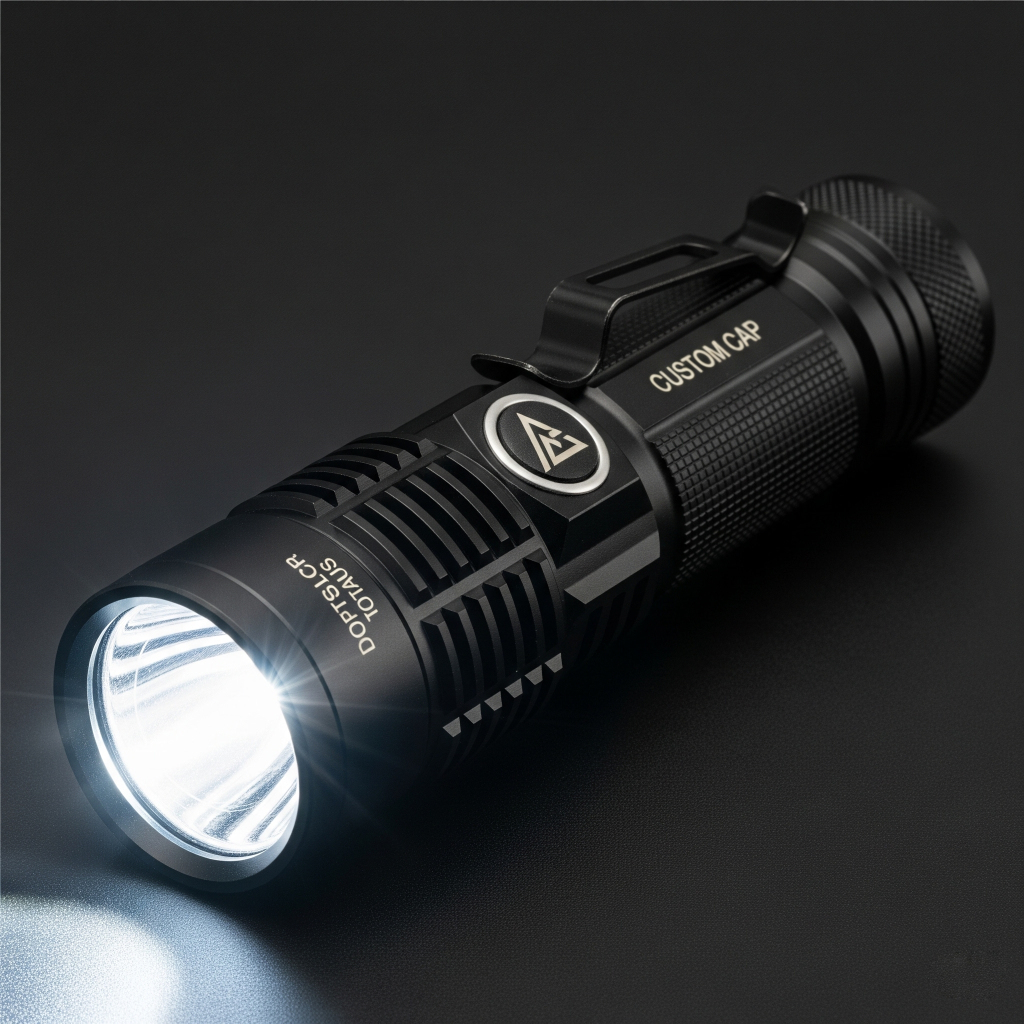
1. Key Differences Between Custom and Standard Flashlights
| Feature | Custom Flashlights | Standard Flashlights |
|---|---|---|
| Design | Fully customizable (color, branding, size) | Fixed design, limited variations |
| Functionality | Tailored features (e.g., specialized beams) | General-purpose functionality |
| Price | Higher upfront cost due to customization | Lower cost with mass production benefits |
| Minimum Order | Often required in bulk | Available individually or in bulk |
| Lead Time | Longer due to design and production | Quick availability |
| Branding Potential | Excellent for corporate or promotional use | Limited branding options |
2. Pros and Cons
Custom Flashlights
 Unique branding opportunities
Unique branding opportunities Tailored functionality (brightness, beam type)
Tailored functionality (brightness, beam type) Better suited for corporate gifts or promotional items
Better suited for corporate gifts or promotional items Higher price point
Higher price point Longer production time
Longer production time
Standard Flashlights
 Affordable and widely available
Affordable and widely available Reliable with consistent quality
Reliable with consistent quality Faster delivery
Faster delivery Limited customization
Limited customization Generic design and features
Generic design and features
3. Use Cases
- Custom Flashlights: Ideal for corporate gifts, promotional giveaways, tactical use requiring specific features, or specialized professional applications.
- Standard Flashlights: Great for everyday use, general consumers, emergency preparedness kits, and budget-conscious buyers.
4. Cost Comparison Table
| Quantity (Units) | Custom Flashlight (Avg. Price per Unit) | Standard Flashlight (Avg. Price per Unit) |
|---|---|---|
| 100 | $15–$25 | $5–$10 |
| 500 | $12–$20 | $4–$8 |
| 1,000+ | $10–$18 | $3–$7 |
Note: Customization complexity (engraving, color, functionality) can affect pricing.
5. Which Offers More Value?
The value of custom vs. standard flashlights depends on your goals:
- If you prioritize brand differentiation and unique features, custom flashlights provide higher value despite higher costs.
- If you need functional, affordable lighting with fast delivery, standard models are the better option.
For businesses or organizations considering bulk orders for promotional events or specialized use, custom flashlights deliver excellent ROI. For personal use or quick availability, standard flashlights are usually more practical.
Conclusion
In the debate between custom flashlights vs. standard models, each option serves a unique purpose. Evaluate your priorities—branding, functionality, cost—and choose the option that best fits your needs.
The post Custom Flashlight vs. Standard Models: Which Offers More Value in 2025? appeared first on Tank007.
]]>The post Custom Flashlight Keychains: Compact Design, Powerful Branding Impact appeared first on Tank007.
]]>Custom Flashlight Keychains: Small in Size, Big on Branding
Custom flashlight keychains are more than just miniature lights—they’re pocket-sized brand ambassadors. Whether you’re a business looking to boost visibility or a nonprofit promoting a cause, these handy tools deliver daily utility while keeping your logo front and center. In this guide, we’ll explore the benefits, features, and top options for custom flashlight keychains that leave a lasting impression.

Why Choose Custom Flashlight Keychains?
Here’s why flashlight keychains make smart promotional items:
- Practicality: Everyone needs a light source at some point—these gadgets come in handy for unlocking doors, finding dropped items, or during power outages.
- High Retention Rate: Unlike flyers or pens, flashlight keychains are rarely discarded.
- Cost-Effective: Available at bulk-friendly prices, especially for promotional events.
- Brand Visibility: Your logo goes wherever the keychain goes—cars, homes, backpacks, etc.
Comparison Table: Top Custom Flashlight Keychain Options
| Model Name | Material | Light Type | Customization | Price (Bulk) | MOQ | Ideal For |
|---|---|---|---|---|---|---|
| Tank007 TK566 | Aluminum | LED | Laser engraving, screen print | $1.20–$2.50 | 100 units | Corporate giveaways, tactical stores |
| Logolites Mini Torch | ABS Plastic | LED | Full-color print | $0.80–$1.60 | 250 units | Trade shows, charity events |
| FlashMark KeyLite | Metal + Rubber | COB LED | Logo print, laser engraving | $1.50–$3.00 | 200 units | Retail, online stores |
| Superfire K1 Series | Zinc alloy | UV LED | Engraving, customized box | $2.80–$4.20 | 100 units | Detective kits, industrial use |
Tip: COB LEDs provide wider, brighter coverage—perfect for maximizing utility.
Where to Order Custom Flashlight Keychains
Here are trusted sources offering custom flashlight keychains in bulk:
- Tank007 – Specializes in aluminum LED flashlights and laser-engraved branding.
- Quality Logo Products – Offers extensive customization with low MOQs.
- Promotique by Vistaprint – Great for full-color branded designs and promotional event giveaways.
These suppliers allow you to upload your design/logo and preview the customization.
Use Cases: Who Benefits from Flashlight Keychains?
- Real Estate Agents: Give clients a branded light they’ll carry daily.
- Event Organizers: Useful swag at tradeshows, conferences, and expos.
- Nonprofits: Practical donation incentives for volunteers and donors.
- Retailers: Add-ons to product bundles or customer loyalty rewards.
Customization Options to Consider
| Feature | Benefit |
|---|---|
| Laser Engraving | Long-lasting logo durability |
| Full-Color Printing | Eye-catching design for promotional campaigns |
| Custom Packaging | Elevates gift-like presentation |
| Keyring Attachment | Ensures it’s used daily on keychains |
Final Thoughts
Custom flashlight keychains combine function and brand visibility in a compact, affordable format. Whether you’re building brand recognition or offering practical gifts to clients, they’re a surefire way to leave a bright impression.
With so many styles, lighting options, and customization formats, it’s easier than ever to find the perfect promotional flashlight for your next campaign or bulk order.
The post Custom Flashlight Keychains: Compact Design, Powerful Branding Impact appeared first on Tank007.
]]>The post How to Use a Blacklight Flashlight to Detect Hidden Pet Stains appeared first on Tank007.
]]>How to Use a Blacklight Flashlight for Pet Stain Detection
Whether you’re a pet owner or cleaning professional, detecting pet urine stains that have dried or seeped into carpets can be frustrating. Fortunately, a blacklight flashlight (also known as UV flashlight) can help reveal what the naked eye can’t see. This guide explains how blacklight flashlights work, how to use them for pet stain detection, and what to look for when choosing the right one.

What Is a Blacklight Flashlight?
A blacklight flashlight emits ultraviolet (UV) light, typically in the 365–395nm range. This UV light causes certain organic materials—like pet urine, saliva, and even vomit—to fluoresce, making them visible in dark conditions.
Pet urine glows yellow-green under UV light due to proteins and phosphors in the waste.
Step-by-Step Guide: Using a Blacklight to Detect Pet Stains
| Step | Action |
|---|---|
| 1. Wait Until Dark | Turn off lights or wait until nighttime to scan in total darkness. |
| 2. Prep the Area | Remove visible debris and vacuum the area. UV light works best on dry, clean surfaces. |
| 3. Turn on the Blacklight | Hold the flashlight 12–18 inches above surfaces and slowly scan. |
| 4. Look for Fluorescent Spots | Pet urine appears as yellow, green, or bluish-white stains. Mark these spots with masking tape. |
| 5. Clean and Deodorize | Use an enzymatic cleaner for pet stains to remove the scent and residue completely. |
Comparison Table: Best Blacklight Flashlights for Pet Stains
| Model | Wavelength | Power Source | Best For | Price Range | Link |
|---|---|---|---|---|---|
| TANK007 UV01 | 365nm | Rechargeable | Carpet, tile, hardwood | $25–$40 | Official Store |
| Escolite UV Flashlight | 395nm | AAA Battery | Budget home use | $10–$15 | Amazon |
| Darkbeam UV301D | 365nm | USB Rechargeable | Multi-surface detection | $20–$35 | Darkbeam |
365nm UV light penetrates surfaces deeper and produces less visible purple light, ideal for accurate stain spotting.
How to Clean Pet Stains After Detection
Once you locate a stain, avoid traditional cleaners that mask odor. Instead, use enzymatic cleaners like Nature’s Miracle or Rocco & Roxie which break down proteins in pet waste.
Common FAQs About Blacklight Pet Stain Detection
Q1: Does all pet urine glow under UV light?
Yes, most dog and cat urine contains phosphorus and proteins that glow yellow-green under UV.
Q2: Can I use any UV flashlight?
Flashlights emitting 365–395nm work best. Cheaper lights often emit purple visible light, making stains harder to see.
Q3: Will detergent or bleach also glow?
Yes, some household cleaners glow under UV. Make sure to distinguish the shape and smell before cleaning.
Final Thoughts
Using a blacklight flashlight is a fast, non-invasive method to find hidden pet stains before they become bigger odor problems. Whether you’re managing a home with multiple pets or running a professional cleaning service, a UV flashlight is an essential tool for detecting and treating unseen messes.
By combining the right flashlight, cleaning method, and timing, you can maintain a cleaner, fresher living environment for both you and your furry companions.
The post How to Use a Blacklight Flashlight to Detect Hidden Pet Stains appeared first on Tank007.
]]>The post Best Custom Flashlight Manufacturers for Wholesale Orders in 2025 appeared first on Tank007.
]]>The Best Custom Flashlight Manufacturers for Wholesale Orders
In 2025, the demand for custom flashlights has surged, driven by businesses seeking branded promotional items, emergency preparedness kits, and specialized lighting solutions. Selecting the right manufacturer is crucial to ensure quality, affordability, and timely delivery. This guide highlights the top custom flashlight manufacturers catering to wholesale orders, helping you make informed decisions for your procurement needs.
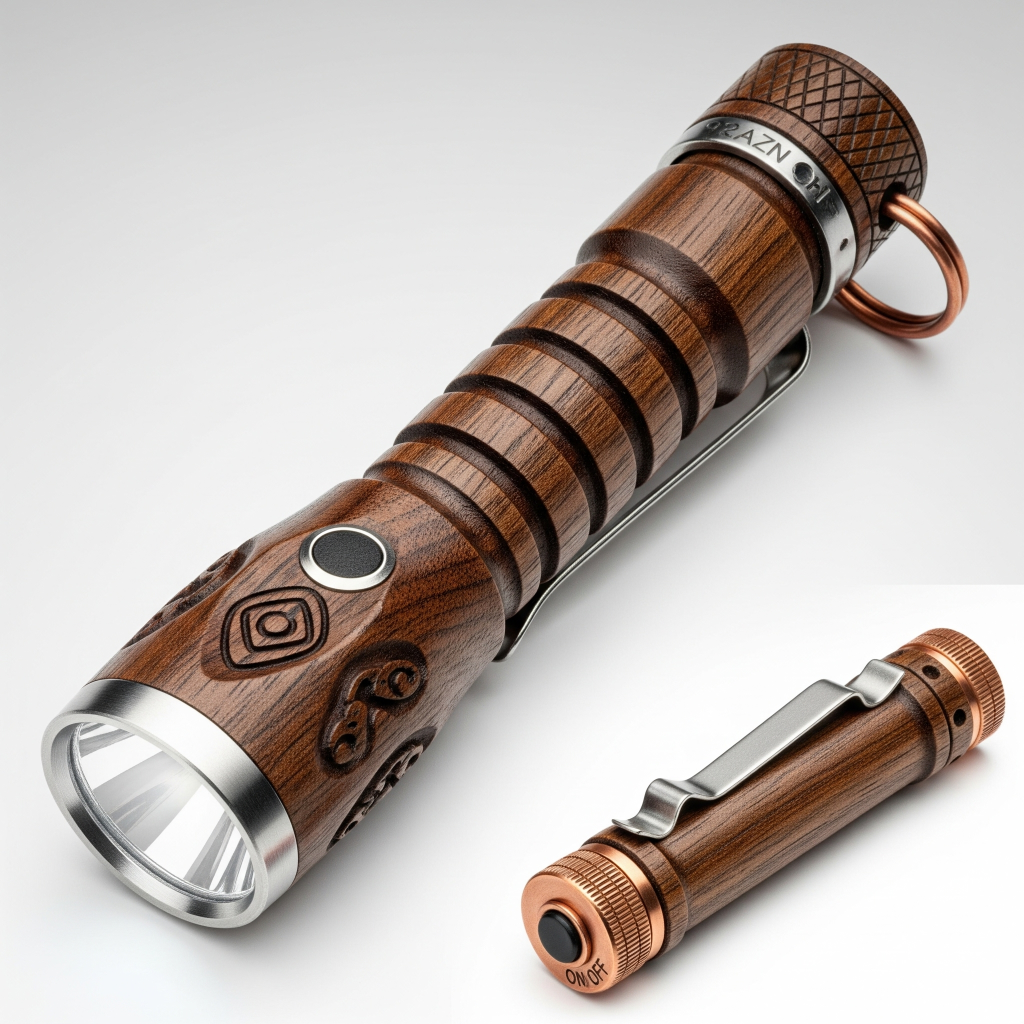
Key Factors to Consider When Choosing a Manufacturer
Before diving into the list, consider the following criteria to select a manufacturer that aligns with your requirements:
- Customization Capabilities: Ability to add logos, choose colors, and modify designs.
- Minimum Order Quantities (MOQs): Flexibility to accommodate your order size.
- Pricing: Competitive rates for bulk purchases.
- Production Lead Times: Efficient turnaround to meet your deadlines.
- Quality Assurance: Certifications and quality control measures in place.
- Global Shipping: Capability to deliver to your location promptly.
Top Custom Flashlight Manufacturers for Wholesale Orders
| Manufacturer | MOQ | Customization Options | Price Range (per unit) | Shipping Regions | Notable Features |
|---|---|---|---|---|---|
| Tank007 | 100 units | Logo engraving, color options, packaging | $2.50 – $10.00 | Worldwide | Specializes in tactical and UV flashlights with OEM/ODM services. |
| Superfire | 200 units | Branding, design modifications | $3.00 – $12.00 | Worldwide | Holds over 20 patents; offers a wide range of LED lighting solutions. |
| Mu Group | 500 units | Full customization, packaging, accessories | $2.70 – $15.00 | Worldwide | Provides flexible MOQs and custom packaging options. |
| Maytown | 100 units | Tactical designs, branding | $3.50 – $14.00 | Worldwide | Complies with ANSI FL1 Standards & RoHS; rapid prototyping available. |
| Fenix Lighting | 50 units | Limited branding options | $5.00 – $20.00 | Worldwide | Renowned for high-quality, rugged flashlights suitable for professional use. |
Manufacturer Highlights
Tank007: Known for its professional-grade flashlights, Tank007 offers OEM and ODM services, making it ideal for businesses seeking customized tactical lighting solutions. Tank007
Superfire: With a diverse product range and numerous patents, Superfire stands out for its innovative designs and commitment to quality. Helius Lights+2SUPERFIRE+2Superfire+2
Mu Group: Mu Group excels in providing tailored solutions with flexible order quantities, making it suitable for both small and large-scale orders. Mu Group
Maytown: Specializing in tactical flashlights, Maytown offers rapid prototyping and ensures compliance with international standards. Maytown
Fenix Lighting: Fenix is renowned for its durable and high-performance flashlights, catering to professional sectors like law enforcement and outdoor enthusiasts. Helius Lights
Conclusion
Selecting the right custom flashlight manufacturer is pivotal for businesses aiming to enhance their brand visibility or meet specific lighting needs. By considering factors like customization options, pricing, and shipping capabilities, you can partner with a manufacturer that aligns with your objectives. The manufacturers listed above have demonstrated excellence in delivering quality products tailored to diverse requirements.
The post Best Custom Flashlight Manufacturers for Wholesale Orders in 2025 appeared first on Tank007.
]]>